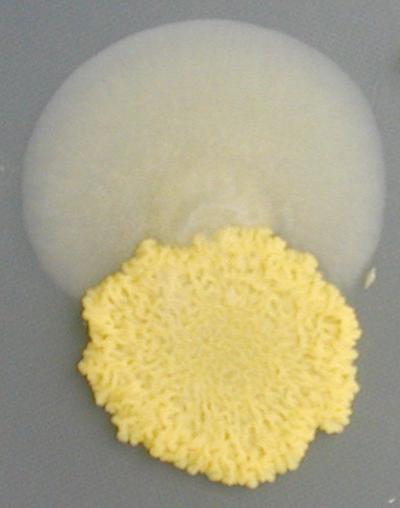DURHAM, N.C. -- Microorganisms like bacteria and fungi can evade treatment by acquiring mutations in the genes targeted by antibiotics or antifungal drugs. These permanent mutations were once thought to be the only way for drug-resistant strains to evolve. Now a new study has shown that microorganisms can use a temporary silencing of drug targets -- known as epimutations -- to gain the benefits of drug resistance without the commitment.
Though the new mechanism was discovered in a fungus called Mucor circinelloides, it is likely to be employed by other fungi as well as bacteria, viruses and other organisms to withstand treatment with various drugs. The finding appears July 27, 2014, in Nature.
"This mechanism gives the organism more flexibility," said Joseph Heitman, M.D., Ph.D., senior study author and professor and chair of molecular genetics and microbiology at Duke University School of Medicine. "A classic, Mendelian mutation is a more permanent binding decision, like a traditional marriage. These epimutations are reversible, more akin to moving in together. If conditions change, it is easier to revert to the way things were."
The epimutations are so transient, in fact, that the researchers almost disregarded them. Cecelia Wall, a graduate student in Drs. Heitman and Maria Cardenas' labs, had been looking for mutations that would make the human fungal pathogen M. circinelloides resistant to the antifungal drug FK506 (also known as tacrolimus). This pathogen causes the rare but lethal fungal infection mucormycosis, an emerging infectious disease that predominantly affects individuals with weakened immune systems.
As is typical for most drug resistance experiments, Wall first grew the pathogen in Petri dishes containing the antifungal drug. She found that the few organisms that survived treatment looked different, being smaller and less diffuse than their parent fungi. Wall then isolated those fungi and sequenced the gene FKBP12 -- the target of FK506 -- to look for mutations that would confer drug resistance.
However, she couldn't detect any mutations in about a third of the isolates. What's more, Wall found that many of the mutants kept "disappearing," looking less like mutants and more like their parents after she took the drug away.

This image depicts drug resistant 'epimutants' emerging from a drug sensitive yeast colony.
(Photo Credit: Soo Chan Lee)
"This is an example of something you might find in the laboratory and just throw away," said Silvia Calo, Ph.D., lead study author and postdoctoral fellow in the Heitman and Cardenas labs. "You look for mutants in one gene and when you don't find a mutation in some of the isolates, you decide not to work on those anymore and instead focus on others. But we wanted to know what was going on."
The researchers began to wonder whether a phenomenon known as RNA interference or RNAi could be the cause of this unstable drug resistance. RNAi uses bits of RNA -- the chemical cousin of DNA -- to silence specific genes. Though RNAi doesn't exist in every organism, the researchers knew it was active in M. circinelloides because of the pioneering work of their collaborators Rosa Ruiz-Vazquez and Santiago Torres-Martinez, with whom Calo trained at the University of Murcia, Spain.
So Calo looked for the presence of small RNAs -- a signature of RNAi -- in the drug resistant isolates. She didn't find small RNAs in the isolates that contained mutations in FKBP12, but she did find them in those lacking mutations. Importantly, Calo found that these small RNAs only silenced the FKBP12 gene and not any other loci in the genome. The results demonstrate that M. circinelloides can develop drug resistance two different ways, either stably through permanent mutations or transiently through reversible epimutations.
"This plasticity enables an organism to reverse epigenetic mutations when selective pressures are relaxed," said Calo. "Otherwise, silencing a gene when it doesn't need to be silenced would be a waste of energy."
The researchers think these epimutations could be employed in a variety of situations, enabling an organism to adapt to an unfavorable environment and then adapt again when conditions improve. Though they have only shown epimutations in two species of M. circinelloides, they have already been approached by a number of other researchers who are interested in investigating similar unstable behavior in other organisms like Aspergillus and Neurospora.
"It could be like the discovery of other molecular phenomena like introns or microRNAs, where it all began with just one example," said Heitman. "We think this discovery may turn out to be generalized fairly quickly."
Source: Duke University